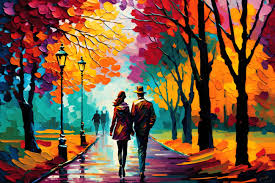
Painting, one of the oldest forms of artistic expression, has captivated humanity for centuries. From the ancient cave landschap schilderij of Lascaux to the masterpieces of the Renaissance and the contemporary works of today, painting has remained a powerful means of communication, exploration, and self-expression. In this article, we delve into the rich history, techniques, and significance of painting as a form of art.
The History of Painting: The history of painting is as diverse and colorful as the palettes used by artists throughout the ages. Dating back tens of thousands of years, cave paintings provide some of the earliest glimpses into human creativity. These prehistoric artworks, found across the globe, depict scenes of daily life, animals, and rituals, offering invaluable insights into the lives of our ancestors.
As civilizations flourished, so too did the art of painting. Ancient Egyptian tomb paintings, classical Greek pottery, and Byzantine religious icons are just a few examples of early painting traditions that have influenced artists for millennia. However, it was during the Renaissance in Europe that painting truly reached new heights of mastery and innovation. Visionaries such as Leonardo da Vinci, Michelangelo, and Raphael revolutionized the art form with their technical skill, perspective, and portrayal of the human form.
Techniques and Styles: Painting encompasses a vast array of techniques and styles, each offering unique opportunities for artistic expression. From the delicate brushstrokes of watercolor to the bold, impasto textures of oil paint, artists employ a variety of mediums to bring their visions to life.
Watercolor painting, characterized by its transparency and fluidity, relies on the interaction of water, pigment, and paper to create luminous compositions. Its versatility allows for both precise details and loose, expressive washes, making it a favorite among artists for centuries.
Oil painting, perhaps the most celebrated medium in the history of art, offers unparalleled richness, depth, and permanence. Developed during the Renaissance, oil paint allows artists to blend colors seamlessly, build up layers, and achieve a wide range of effects, from the luminous glazes of the Old Masters to the thick impasto of modern masters like Vincent van Gogh.